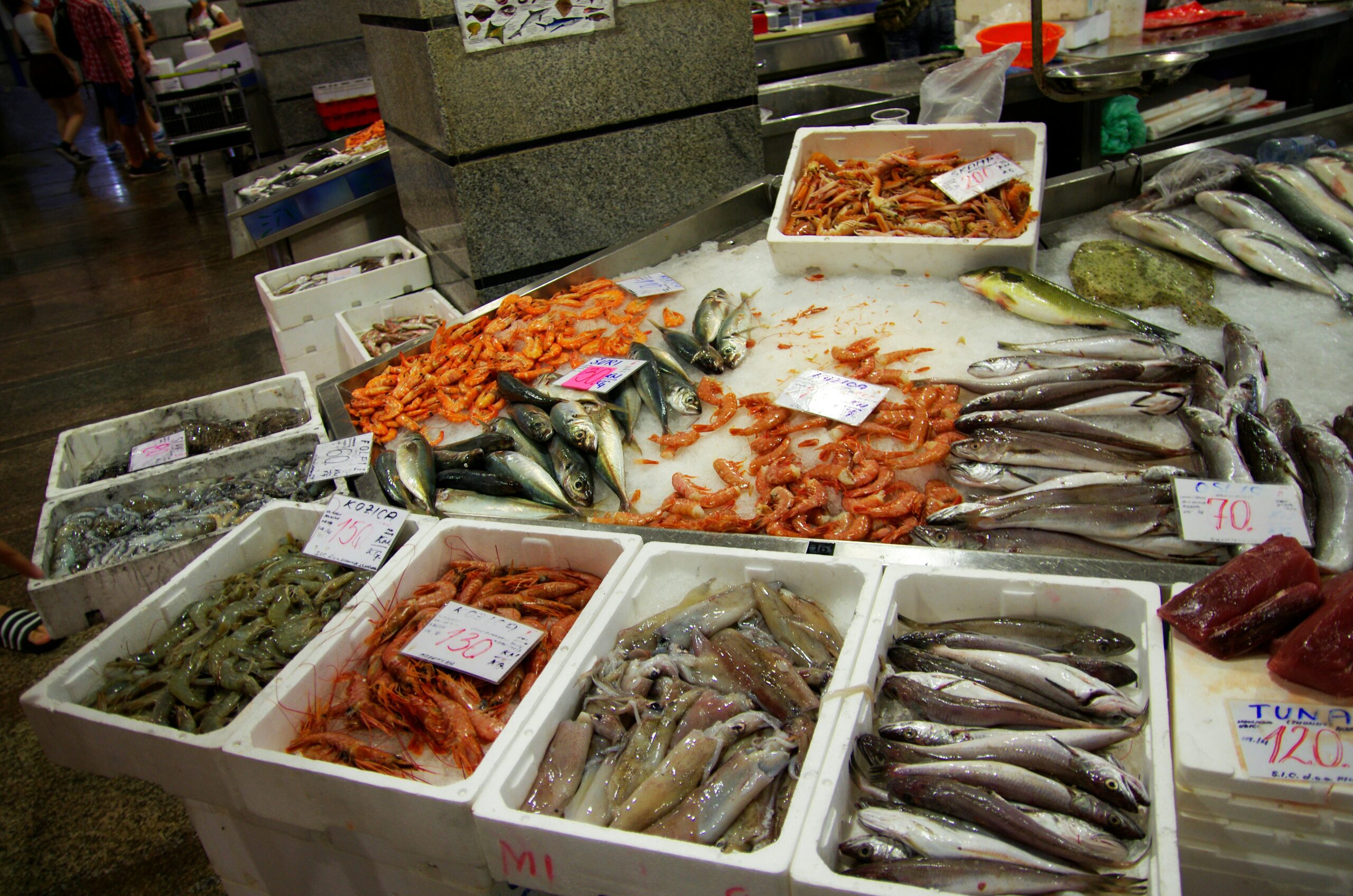Image description: Fish displayed on ice at a food market. Photo by Lothar Boris Piltz on Unsplash
A new report from the European Environmental Bureau (EEB) has revealed alarming levels of PFAS contamination—commonly referred to as “forever chemicals”—in fish across European waters. As reported by the EEB, PFOS, one of the most toxic PFAS compounds, was found in concentrations that exceed both current and proposed safety thresholds in rivers and coastal ecosystems across seven EU countries.
PFAS are synthetic chemicals used in a wide range of consumer products, from non-stick cookware to waterproof clothing. Their chemical stability means they persist in the environment for decades, accumulating in wildlife and humans. The EEB report warns that more than half of Europe’s rivers and nearly all coastal waters already surpass safe PFOS levels, posing risks to biodiversity and seafood safety.
Despite the European Commission proposing stricter water quality standards in 2022, implementation has stalled. Several governments are reportedly seeking to delay compliance by up to ten years, raising concerns among environmental groups and public health advocates.
Additional research published by the Marine Conservation Society and the University of Portsmouth, and covered by OCF, has identified sewage discharges as a significant source of PFAS pollution in marine environments. Sampling from Langstone Harbour in Hampshire revealed that PFAS concentrations surged following storm overflow events, with banned substances like PFOS and PFOA detected at levels exceeding environmental quality standards.
Further evidence from Defra’s Centre for Environment, Fisheries and Aquaculture Science, also reported by OCF, found flounder in UK rivers containing PFAS concentrations as high as 11,000 ng/kg. These findings underscore the potential for PFAS to enter the human food chain through seafood consumption.
Environmental organisations are calling for urgent regulatory action to phase out PFAS at the source. Campaigners argue that relying on consumers to avoid contaminated products is insufficient, and that systemic bans and improved wastewater treatment are essential to protect ecosystems and public health.
